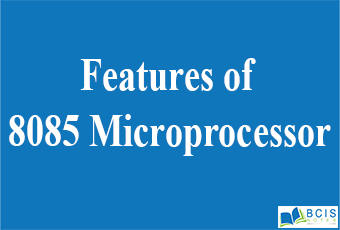
Features of 8085 Microprocessor
The 8085 is an 8-bit microprocessor, and it was launched by the Intel team in the year of 1976 with the help of NMOS technology. This processor is the updated version of the microprocessor. The configurations of 8085 microprocessors mainly include data bus-8-bit, address bus-16 bit, program counter-16-bit, stack pointer-16 bit, registers 8-bit, +5V voltage supply and works at 3.2 MHz single segment CLK. The applications of 8085 microprocessor include microwave ovens, washing machines, gadgets, etc. This article discusses an overview of what is 8085 microprocessor architecture. Its features can be mentioned below:
- It is an 8-bit microprocessor (each character is represented by 8 bits or a byte).
- It is manufactured with N-MOS (n-type Metal Oxide Semiconductor) technology implemented with 6200 transistors.
- It has 16-bit address lines – A0-A15 (to point the memory locations) and hence can point up to 2^16 = 65535 bytes (64KB) memory locations.
- The first 8 lines of the address bus and 8 lines of the data bus are multiplexed AD0-AD7. Data bus is a group of 8 lines D0-D7.
- It provides 5 level interrupts and supports external interrupt requests.
- 16-bit program counters (PC).
- A 16-bit stack pointer (SP).
- It provides 1 accumulator, 2 flag register, six 8-bit general purpose register arranged in pairs: BC, DE, HL, and 2special purpose registers.
- It consists of 74 instruction sets.
- It performs arithmetic and logical operations.
- It provides status for advanced control signals, On-chip clock generator.
- It requires a signal +5V power supply and operates at 3.2 MHZ single-phase clock with maximum clock frequency 6 MHz and minimum clock frequency 500 kHz.
- Serial input/output port.
- 1.3 micro sec instruction cycles.
- It is enclosed with 40 pins DIP (Dual inline package).
- It can be used to implement (interface) 3 chip micro-computers (8085, 8155, 8255 and 8355: Peripheral IC’s).
You may also like Block Diagram of a Computer

Leave a Reply